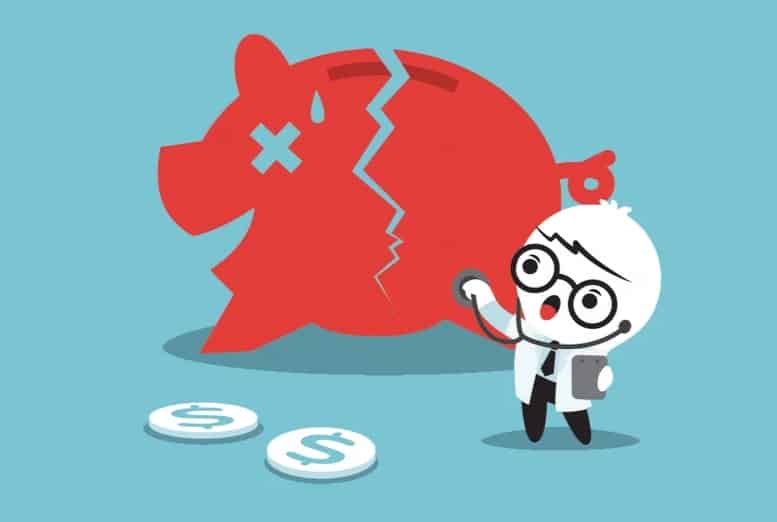
When it comes to salting away enough money for retirement, one of the biggest obstacles is the high cost of healthcare.
The Employee Benefit Research Institute estimates that a 65-year-old man and woman would need $131,000 and $147,000, respectively, to stand a good chance of being able to cover premiums and prescriptions in retirement. These are expenses that could blow up even the best-laid income plans.
Yet a simple solution to address this problem — and boost overall retirement savings — is all too often overlooked.
Health Savings Accounts (HSAs) are arguably the best deal available for retirement savers, as “there is a triple tax benefit,” says Frank O’Connor, vice president of research and outreach for the Insured Retirement Institute. “You get a deduction going into them, tax free growth on any earnings, and then tax-free withdrawals on qualified expenses.”
There isn’t a single savings vehicle like this, he says.
Yet most people know little about them, and just 7% of Americans have them, according to a United Benefit Advisors survey.
“The vast majority of clients have not heard of an HSA when we bring it up,” says Brian Parker, a certified financial planner and managing director and co-founder of EP Wealth Advisors in Torrance, Calif.
And those who have heard of it, he says, don’t understand them.
What’s the Biggest Misconception Surrounding HSAs?
Savers incorrectly assume that they must spend down their annual HSA balances each year or lose the benefits, which is the case with Flexible Spending Accounts (FSAs), an entirely different vehicle used for out-of-pocket expenses such as co-payments and deductibles.
A recent report published by the LIMRA Secure Retirement Institute and the Insured Retirement Institute (IRI) found that even among individuals who consider themselves somewhat knowledgeable about HSAs, 41% mistakenly think that account balances must be spent by the end of the year or forfeited.
On the contrary. Unlike money in FSAs, HSA balances roll over year after year — even if you change jobs or insurance plans.
And because of that, HSAs have the potential to accumulate large amounts of savings which can compound tax free over time, supplementing the retirement savings you’re amassing through your employer-sponsored 401(k)s and individual retirement accounts.
Who Qualifies for an HSA?
Many individuals access HSAs through their employers, but that isn’t the only option.
As long as you’re in a high-deductible plan and under the age of 65 (when Medicare kicks in) you can open an HSA through a bank or other HSA provider.
In 2018, healthcare plans with $1,350 deductible and $6,650 maximum out-of-pocket for individuals, and a $2,700 deductible and $13,300 maximum out-of-pocket for families qualified as high deductible plans.
While more and more plans are high deductible, you’re first priority should be to find the best plan for your situation says Parker. HSAs have their perks, but they shouldn’t drive your healthcare decisions, he cautions.
How Much You Can Save In an HSA?
In 2018, contribution limits for these plans were $3,450 for individuals and $6,850 for families. For savers over age 55, there’s even a catch-up contribution worth an extra $1,000 a year.
An individual who socks away $3,450 a year over the next 20 years and earns a 2% rate of return could accumulate about $72,000 and save roughly $21,000 in taxes – and that’s assuming he or she spends $500 a year on healthcare costs. (You can use this calculator to estimate your savings.)
How HSAs Fit Into Your Overall Savings Strategy
First introduced in 2004, HSAs were designed to help offset the out-of-pocket expenses of high-deductible health insurance plans. For many people these are a great option for paying for qualified health expenses with tax-free dollars.
But what happens if you end up saving more than you need to cover qualified medical costs in your HSA?
If you’re 65 or younger, you’ll owe ordinary income tax plus a 20% penalty on non-qualified withdrawals. After age 65, however, you can take money out for any purpose sans penalty; you’ll simply owe tax on only the non-qualified portions of your withdrawals.
To be sure, HSAs shouldn’t be your primary retirement savings tool. That would be a 401(k) or other employer-sponsored plan, particularly if you have matching benefits.
Nevertheless, assuming you are on track for your primary retirement plan and have enough emergency savings on hand, HSAs are an ideal place to park additional savings – especially since many plans now offer the option of investing HSA money into a variety of stock and bond funds, as in a 401(k).
As with any investment, though, you’ll want to be mindful of fees, minimum balance requirements, and investment choices, says Parker. Assuming you plan to hold your HSA assets until your golden years, your allocation can mirror that of your other retirement accounts.
Just make sure you have enough cash on hand to pay for any big health expenses that come up along the way.
